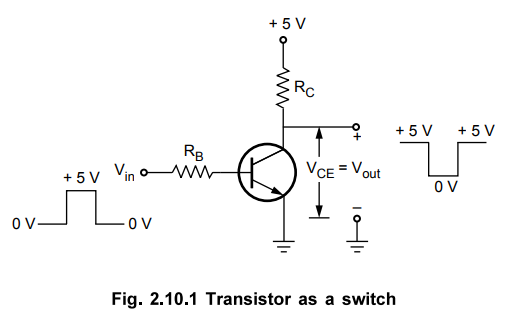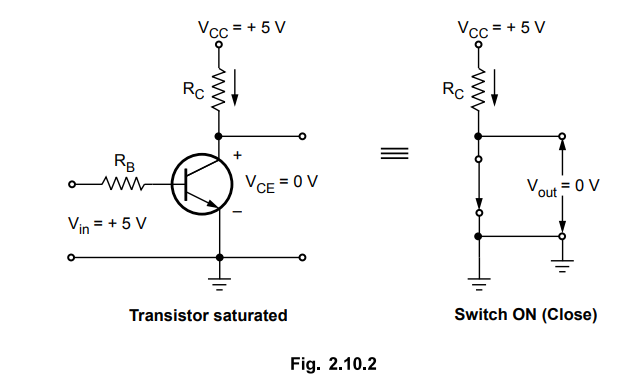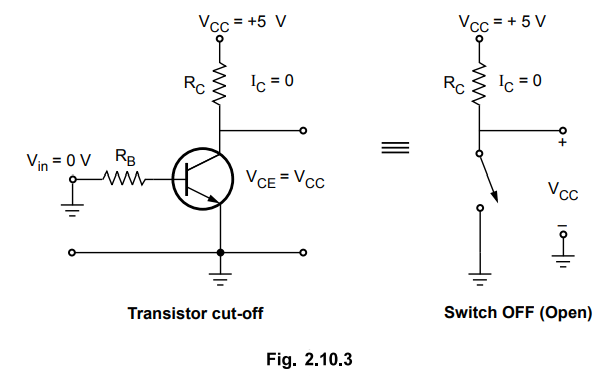Electron Devices and Circuits: Unit II: (a) Bipolar Junction Transistors (BJT)
Biasing Transistors for Switching Circuits
Bipolar Junction Transistors (BJT)
• Transistors are widely used in digital logic circuits and switching applications. In these applications, the voltage levels periodically alternate between a "Low" and a "High" voltage, such as 0 V and + 5 V.
Biasing Transistors for Switching Circuits
•
Transistors are widely used in digital logic circuits and switching
applications. In these applications, the voltage levels periodically alternate
between a "Low" and a "High" voltage, such as 0 V and + 5
V.
•
In switching applications, the transistor operates either in cut-off region or
saturation region. It is connected in common emitter configuration as shown in
the Fig. 2.10.1.

•
In this circuit, when input is HIGH, base current flows and it is greater than
IC / βihence transistor is operated in saturation. In saturation
condition, voltage between collector and emitter, VCE(gat^ is typically 0.2 V
to 0.3 V and hence transistor acts as closed switch. This is illustrated in
Fig. 2.10.2.

•
When input is LOW, base current and collector current is zero and hence
transistor is operated in cut-off. In cut-off VCE = Vcc and transistor acts as
open switch. This is illustrated in Fig. 2.10.3.

•
For switching operation we have to operate transistor into saturation and
cut-off.
•
In CB configuration, current gain IC j is less than 1
and
hence it requires high input (Emitter) current to drive the transistor into
saturation.
•
In CC configuration, voltage gain is less than 1 and hence it requires high
base voltage to forward bias BE-junction. Furthermore, as collector is tied to
VCC' it is not possible to forward bias the CB-junction and hence to drive
transistor in saturation.
•
Due to these reasons, the CB and CC configurations are not preferred to operate
as switch.
Review Questions
1. Explain the working
of a transistor as a switch.
2. Why CC and CB
configurations are not preferred for BJT as a switch ?
Electron Devices and Circuits: Unit II: (a) Bipolar Junction Transistors (BJT) : Tag: : Bipolar Junction Transistors (BJT) - Biasing Transistors for Switching Circuits
Related Topics
Related Subjects
Electron Devices and Circuits
EC3301 3rd Semester EEE Dept | 2021 Regulation | 3rd Semester EEE Dept 2021 Regulation
